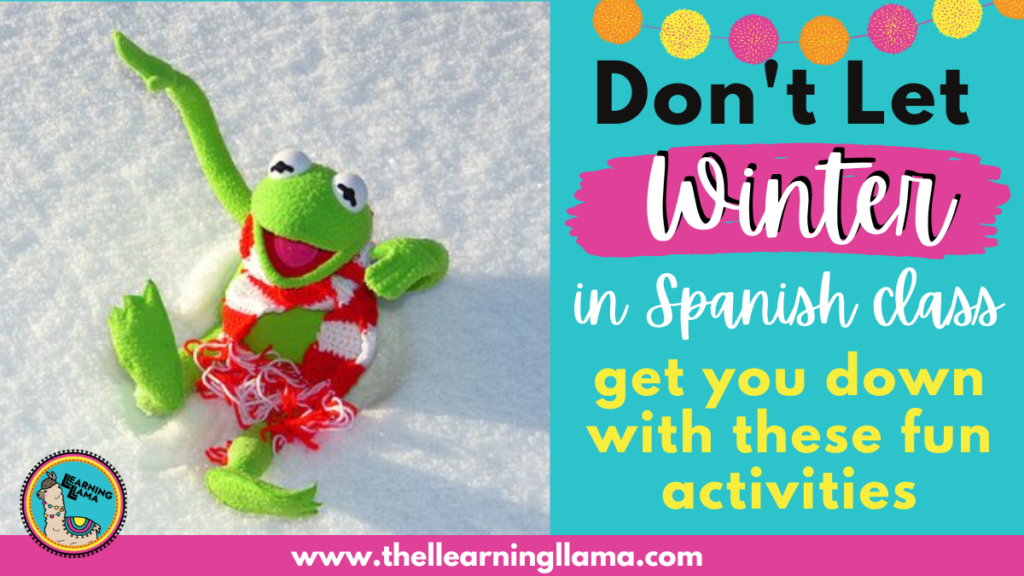Don’t let this winter be a bleak, boring, long stretch of time. This winter in Spanish class, fill your lessons with fun activities that relate to culture, weather, and holidays. All of these Spanish activities will keep your students in the target language, practicing all three modes of communication. And we all know that January through March is a looooong time. What is only three months, seems to drag on forever. So for your sanity… and your students’, try some of these winter in Spanish activities!
Draw a Snowman
A great interpretive task for winter is drawing a snowman based on a description. You can have written descriptions or read them aloud. As your students listen, they will draw the snowman, his body parts, and clothing. For example: El muñeco de nieve tiene dos ojos negros, una nariz anaranjada, una bufanda con rayas azules y rojas, y una gorra verde. Modify this activity by challenging more advanced students to write their own descriptions for a partner. Then, they can check to see if the drawing matches what they said. Although winter in Spanish speaking countries may not always have snow, we do associate snow with winter and when doing a unit on clothing, colors, or body parts, this is such a fun activity!
Get a complete Spanish snowman resource here with a set of 12 or 20 snowmen (for differentiation) plus over 10 ways to use the snowmen, like writing descriptions, gallery walk matching, drawing based on what you hear, and much more!
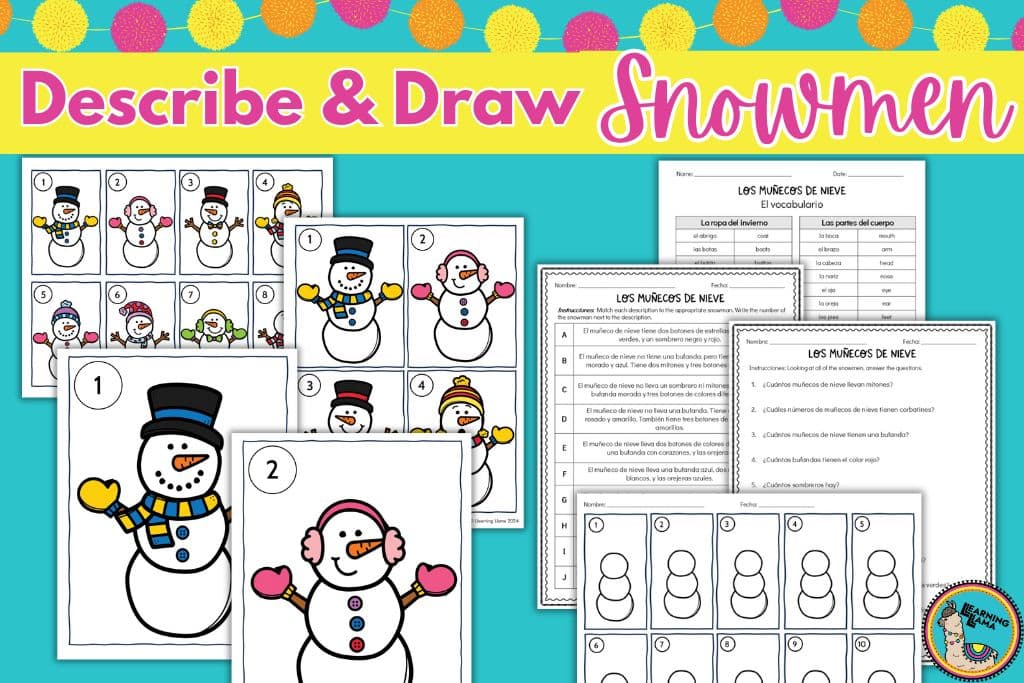
Valentine’s Day Choice Boards
Although the month of February may be short, it is a long, drawn-out month that feels like it never ends. We don’t have another break in sight until Spring Break and we need something fun to keep students engaged. In elementary school, Valentine’s Day parties were so much fun, with candy, passing out valentine’s, and watching movies. Once middle and high school hit, we tend to lose that excitement, but it doesn’t mean we can’t celebrate this day! Try Valentine’s Day choice boards that will give students a short break from curriculum, yet keep them in the target language. It will also benefit them to use Spanish in authentic ways like writing poetry, planning a party, or recording videos. Here are novice and intermediate versions of the choice boards.

Three Kings Day
Three Kings Day falls on January 6, when we are almost all back in school. In Hispanic countries, this day is the culmination of the Christmas and holiday festivities. The three kings brought baby Jesus gifts on this day, and today, children receive gifts from the three kings on January 6. Children put their shoes out the night before and their gifts appear near the shoes the next morning! A fun activity to do with your students is to have them put their shoes out in the hallway (or give everybody a brown paper lunch bag to use so you don’t have to worry about stinky feet!) Then, give all students post-it notes. They will write kind notes of appreciation for their classmates and put them on the shoes or in the bags. It will be like receiving a bunch of mini gifts of kindness!
Daily Holidays Calendar Talk
Keep the holidays rolling! Every day is a national holiday with this calendar talk resource. Celebrate fun days like National Hat Day or International Lego Day or National Hot Chocolate Day! Every day, you will share the fun holiday and 3 interesting writing prompts. Students fill out the interactive notebook and discuss. You can share a colorful Slides presentation and encourage calendar talk. Read my blog post for how I use this twist on calendar talk in my classroom. This is a perfect way to get back into a routine after a long break! You can find this resource in Spanish or English, for every month, but if you’re looking for January or February, here are the direct links.
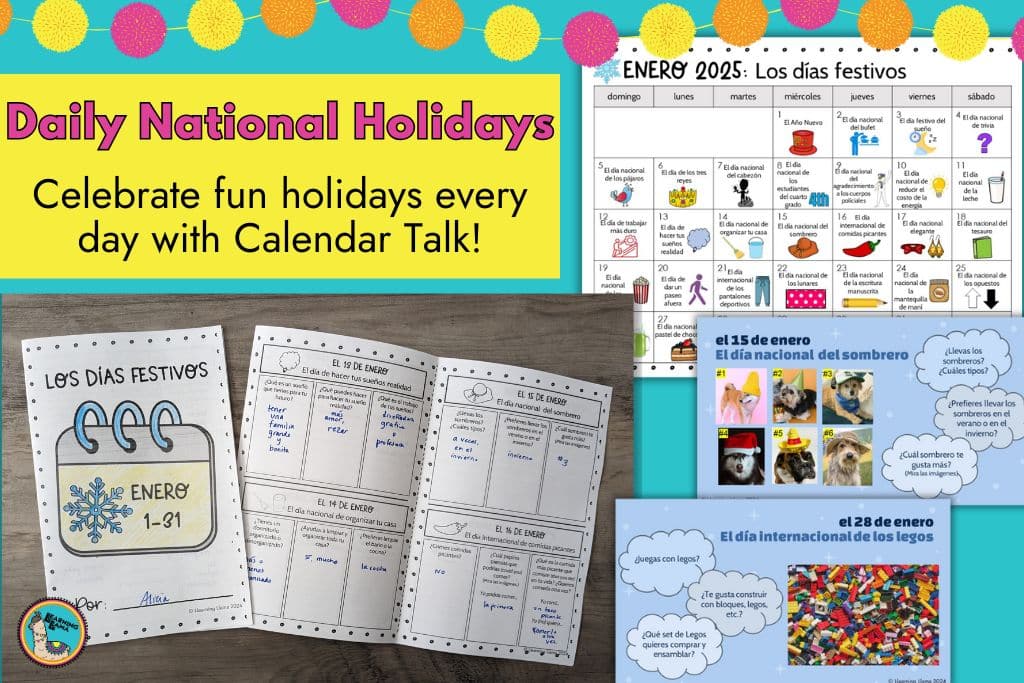
After Winter Break Writing
The first day back from winter break can be a bit daunting… and let’s admit – depressing. Our students’ sleep schedules are off, and we still want to be lounging on the couch in our Christmas pjs. But we’re all back in the classroom. Take that first day back to ease into lessons. You don’t want to get up in front of the class and teach a comprehensible input lesson, and they don’t want to participate too much yet. Give them the class period to write and draw about their break in the target language. With this download, you get two versions of the project, a list of winter vocabulary, a brainstorm sheet, and a rubric. Simply print, copy, and go on the day after winter break. Sit back, relax, and build relationships with your students as they tell you about their winter in Spanish!
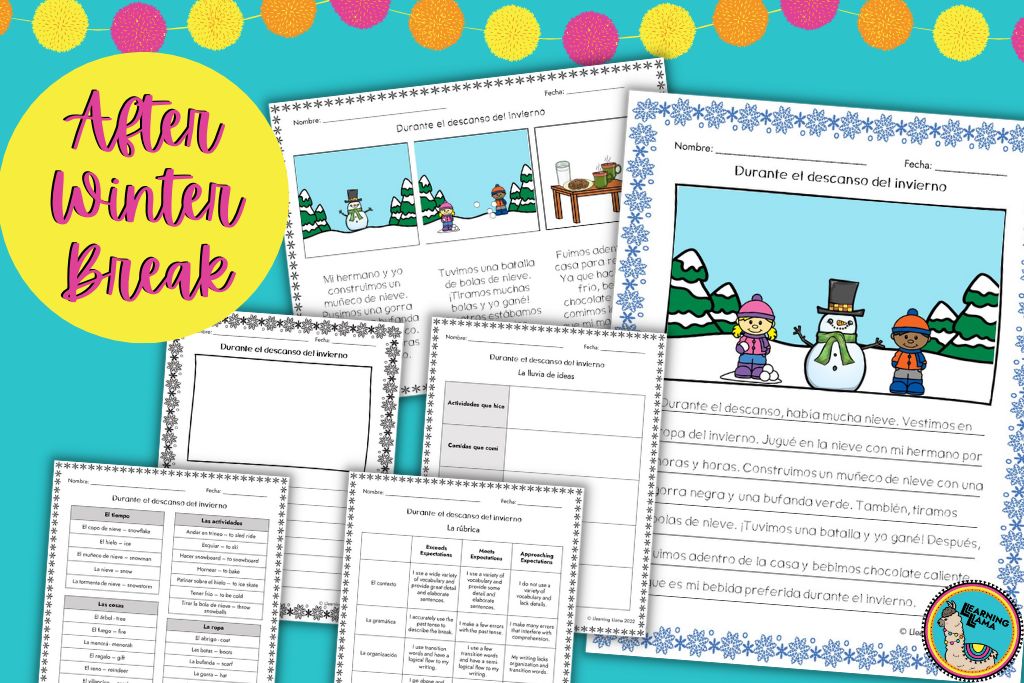
Winter Activities Survey
Having your students create and administer surveys is one of the purest forms of interpersonal communication. They will spend time asking and answering questions in the target language. You’ll need to provide students with a list of winter activities vocabulary, like “beber chocolate caliente” or “tirar bolas de nieve”. Let’s take a look at how this can work for both novice and intermediate or advanced learners.
Novice Surveys
Each student will choose just one winter activity… and create one question to ask the class based on that activity. For example: ¿Con qué frecuencia esquías en las montañas? Or ¿Con qué frecuencia miras al hockey de hielo en la televisión? They will ask every student in the class the same question. When students respond, they will use a frequency word like “siempre, a veces, de vez en cuando, or nunca.”
Every time a student responds, students will keep track of their responses with tally marks on a piece of paper. Once all results are in, they should create a bar graph to compare the results. Then, have them write complete sentences such as “Cinco estudiantes nunca esquian.” or “La mayoría de la clase siempre bebe chocolate caliente.” They can share their results with the class.
Before you do this activity, you want to make sure your students familiarize themselves with frequency words. I love doing Pear Decks with my students to make sure they all understand the new vocabulary. Here is a Frequency Words Pear Deck, and if you’re unsure of how to use Pear Deck, learn why it is my favorite digital classroom tool here!
Intermediate or Advanced Surveys
Rather than just coming up with one question and surveying everybody in the class with the same question, intermediate and advanced students can create an entire survey. Set a minimum question requirement, like 10 questions. Each student should come up with a theme for their survey. For example: winter beverages, winter sports, or winter clothing. They should create an entire survey based on that theme. Let’s take winter beverages for example. Some questions they may ask could be: 1. ¿Cuál es tu bebida favorita? A: chocolate caliente B: ponche de huevo C: té caliente D: café 2. ¿Prefieres beber bebidas calientes o bebidas frías?
With their 10 questions, they can design a Google Forms survey so every student can quickly and easily take it. I recommend giving students one class period to create their survey, a second day to take everybody’s surveys, and on day three, they can review the results and present them to the class.
New Year’s Grapes
The custom in Spanish-speaking countries is to eat 12 grapes as the clock strikes midnight on New Years. The 12 grapes represent your 12 wishes for the new year. In the past, I had my students pick 12 wishes they have for the new year and write them in the target language on grapes. I displayed them on a bulletin board like you see here.
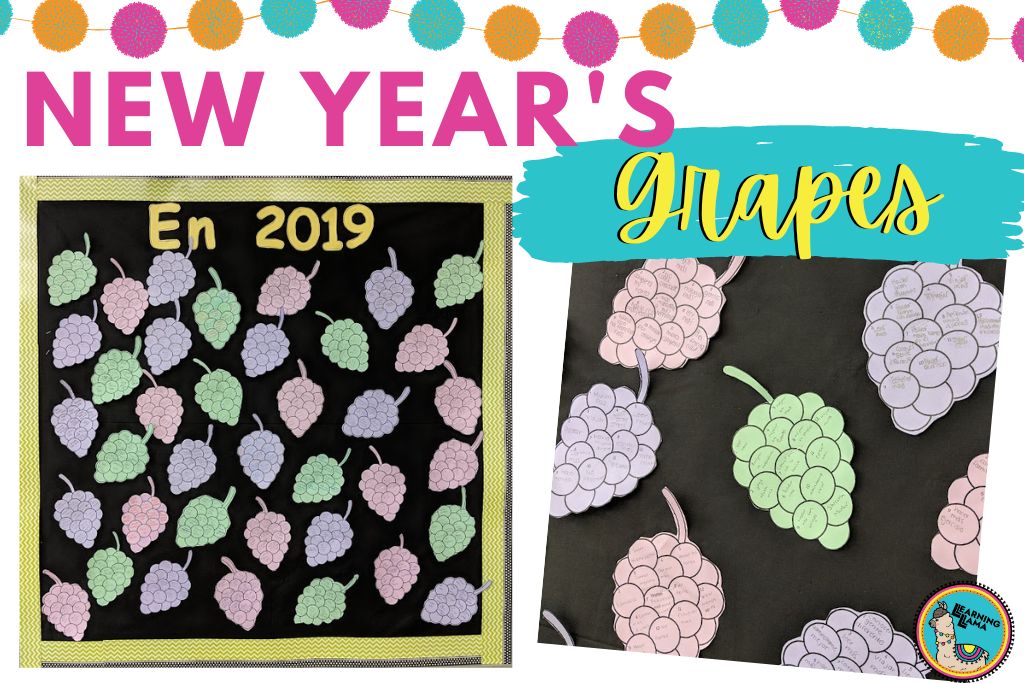
Innocents Day
SImilar to April Fool’s Day in the United States, El Día de los Inocentes is a popular holiday in Hispanic countries that falls on December 28. Read an article about the 15 best pranks to pull on Día de los Inocentes. This article is a great text for jigsaw readings, where each group reads one to three of these pranks and presents it to the class. As they read, they can find 2 new vocabulary words, write a 1 sentence summary, and draw a representation of the prank.
Poinsettia Activities
Poinsettias are mainly used at Christmastime, but they are still a winter flower that is displayed for a few months (if watered the adequate amount!). Read a legend about the origin of the poinsettia, learn about the history of this flower, or take a virtual field trip to nurseries and greenhouses in Mexico to learn about the production! Students can do any of these activities in English or Spanish! You can also incorporate poinsettia crafts or a fundraiser with a local florist.
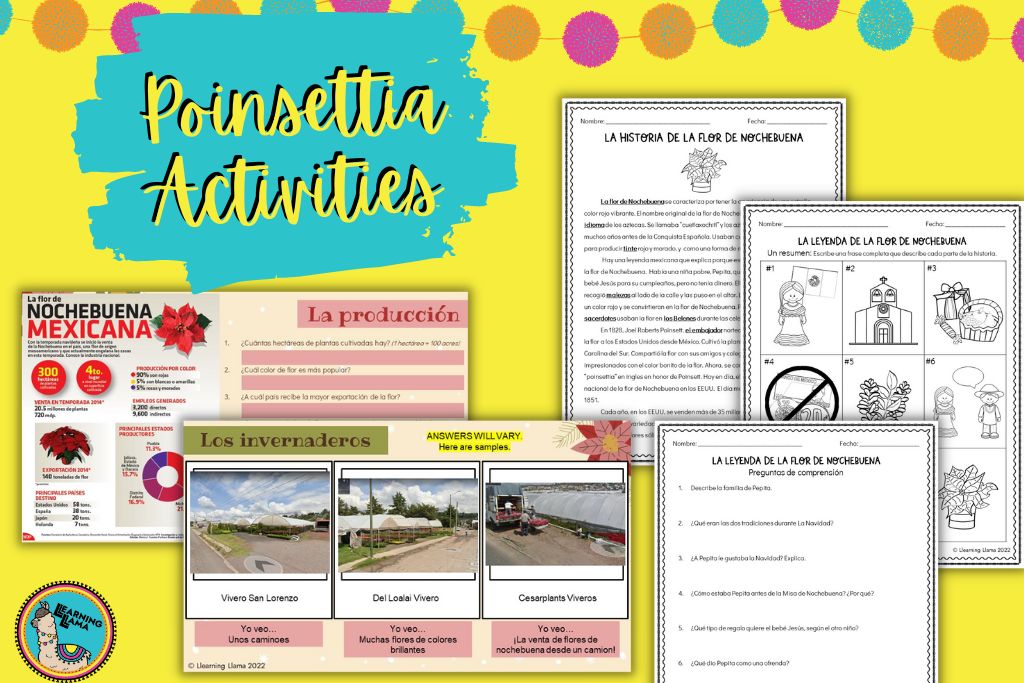
I hope this winter in Spanish class is more fun than the typical year for you! Let me know if you try out any of these activities with your students.

